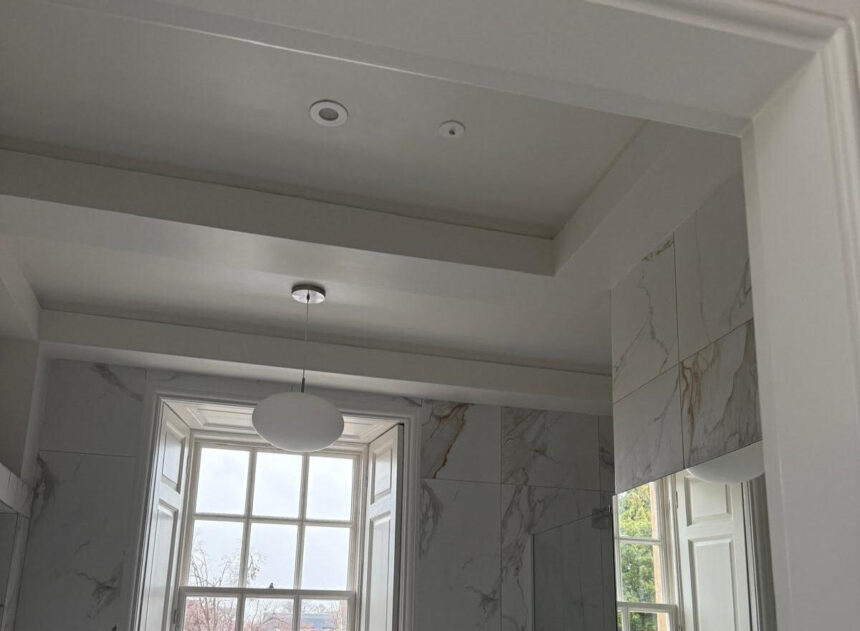Water mist fire suppression is one of the most effective and modern fire protection systems available, combining powerful fire control with minimal water usage and reduced damage risk. This guide explains water mist fire suppression in plain terms, helping you understand how it works, why it’s gaining traction, and how to choose the right system for your property.
What is a Water Mist Fire Suppression System?
A water mist fire suppression system is a type of fire protection system that uses extremely fine water droplets, much smaller than those in traditional sprinkler systems, to control and extinguish fires. Instead of drening the area with large volumes of water, a water mist system generates a fine mist or fog that rapidly lowers heat, displaces oxygen, and suppresses flames.
These systems rely on fire suppression technology that’s engineered to create small droplets (often measured in microns) under precise pressure, enabling the water to evaporate quickly when exposed to fire. The process disrupts the fire triangle, that is, the three core elements that sustain a fire: heat, fuel, and oxygen.
Water mist suppression systems are used as an alternative or complement to traditional sprinkler systems. They are particularly suitable where minimal water damage is important, or where there is sensitive equipment or combustible materials that might suffer under a deluge of water.
How Water Mist Fire Suppression Works
In order to understand how a water mist fire suppression system controls fire, it helps to break down the science behind its operation. These systems work by disrupting key elements that sustain a fire.
Fine droplets absorb heat rapidly to cool the fire zone
One of the key advantages of water mist is that the tiny droplets have a much larger surface area relative to their volume than the larger droplets from traditional fire sprinklers. Because of this, they absorb heat much more quickly. As the fine mist comes into contact with radiant heat, the droplets evaporate, drawing heat away from the burning material and rapidly lowering the temperature. The cooling effect helps prevent the fire from growing and suppresses the flames more effectively.
Water mist displaces oxygen to slow and suppress combustion
As those droplets evaporate, they turn into steam. This rapid vaporisation helps to displace oxygen, one of the three sides of the fire triangle. When oxygen levels drop in the fire zone, combustion slows. The mist creates a kind of blanket or cloud that fills the area, making the air itself less able to support the fire. This oxygen displacement disrupts the fire’s ability to sustain itself, helping to control or even suppress the blaze.
High surface area coverage reduces the fire’s energy more efficiently
Because the droplets are so small, water mist achieves high surface area coverage throughout the fire zone. This means more water is in contact with hot gases, flames, and surrounding combustible materials. The large cumulative surface area means heat is absorbed more efficiently, and the mist can also pre-wet nearby fuels, reducing the risk of fire spread. In other words, the system doesn’t just douse the flames; it systematically reduces the fire’s energy and capacity to reignite or spread.
Core Benefits of Water Mist Systems
Water mist systems offer a compelling mix of effectiveness and economy. Below are some of the most important benefits of choosing water mist.
Faster cooling and reduced oxygen levels
Thanks to the fine mist, water mist systems deliver a rapid cooling effect, which can significantly lower the temperature in the fire zone. Combined with the oxygen displacement, this makes fire suppression more effective and quicker than many traditional methods. The dual action, cooling and smothering, makes water mist systems especially efficient, helping to prevent re‑ignition and further fire spread.
Minimal water usage and property damage
One of the biggest selling points of water mist is its minimal water usage. Compared to a traditional fire sprinkler system, water mist suppression systems use far less water because the droplets are so efficient at absorbing heat. This means greatly reduced water damage to property, because you don’t flood the space in the same way as with standard sprinklers. For buildings like homes, student accommodation, heritage sites, or areas with sensitive equipment, this is a huge advantage.
Safe, clean, and environmentally friendly
Water mist is a clean, eco‑friendly fire suppression solution. It relies on plain water, with no chemical agents or toxic gases. This means no noxious gases, making it safe for occupants and first responders, even during or after activation. Because less water is used, there’s less runoff and a reduced need for large storage tanks, which in turn reduces the environmental footprint. Using water also means the risk of damaging assets is lower, and the system components tend to be simpler and more compact.
Practical Uses of Water Mist Fire Suppression
Water mist technology is remarkably versatile. It can be deployed across a variety of settings, from everyday residential homes to highly specialised industrial or historic properties. Here’s how water mist systems serve different real‑world scenarios.
Residential applications for flats, houses, and small buildings
In the residential context, water mist fire suppression is increasingly attractive. For houses, flats, or care homes, a water mist system can provide effective fire control while avoiding the heavy water damage that large sprinkler heads might cause. Because these systems can be engineered with smaller pipes and lower water flow, they fit well into domestic installations and are ideal where preserving finishes and interiors is a priority.
Commercial and industrial use for offices, kitchens, and server rooms
In commercial buildings, such as offices, or high-risk zones like kitchens, server rooms, or data centres, water mist systems shine. Kitchens often involve flammable liquids (oil fires) and high heat, and traditional sprinklers may struggle or cause collateral damage. Mist systems can cool quickly and suppress without soaking everything. In server rooms, where sensitive equipment must be protected, water mist offers fire protection that minimises disruption while controlling fire spread.
Specialist environments like heritage sites and high-risk areas
Water mist is especially useful in heritage buildings, museums, or historic properties where you want to protect property from fire but also avoid water damage to irreplaceable artefacts. In high-risk areas, such as industrial sites or buildings with combustible materials or oil-based fuels, mist systems can be tailored for complex hazards. The technology can also be engineered to comply with high standards, giving building owners specialist fire suppression solutions that traditional sprinkler systems may not provide.
Choosing the Right Water Mist System for Your Property
Selecting the appropriate water mist sprinkler system installation in Edinburgh and for every other location depends on several factors. First, you need to assess the fire risk based on the building type and its use: is it a residential home, an industrial site, a heritage building, or a data centre? Each has different needs and hazards.
You will also need to consider the design standard: in the UK, water mist systems must often comply with performance-based standards because prescriptive standards are evolving. The British Standard BS 8458 previously covered domestic mist systems, and newer regulations, such as BS EN 14972‑17:2025, now apply to residential occupancies.
Another factor is the type of system: water mist systems come in low-, intermediate-, or high-pressure designs, depending on how fine the mist needs to be, how rapidly it must respond, and what risk you’re protecting against.
It’s also vital to engage certified installers: in UK residential premises, third-party certification may be required to satisfy Building Control or fire‑safety authorities. Finally, the system should be integrated with your building’s fire strategy, keeping in mind the fire triangle (heat, fuel, oxygen) and how your mist system will interact with smoke detection, evacuation, and fire‑fighting services.
Final Thoughts
Water mist fire suppression systems are an innovative solution at the forefront of modern fire protection. By using fine mist, they deliver fast cooling, displace oxygen, and efficiently suppress flames, all while using minimal water, reducing damage, and keeping occupants safer.
Compared to traditional sprinkler systems, water mist offers a more controlled, less destructive method of fire suppression. It is especially well-suited to sensitive environments, heritage buildings, or properties where water damage must be minimised.
If you are considering a fire protection upgrade or are planning a new build, talking to a specialist about a water mist system could be a smart, forward‑thinking decision. With the right design, certification, and installation, you can have a fire control solution that protects property, people, and the environment without compromise.


